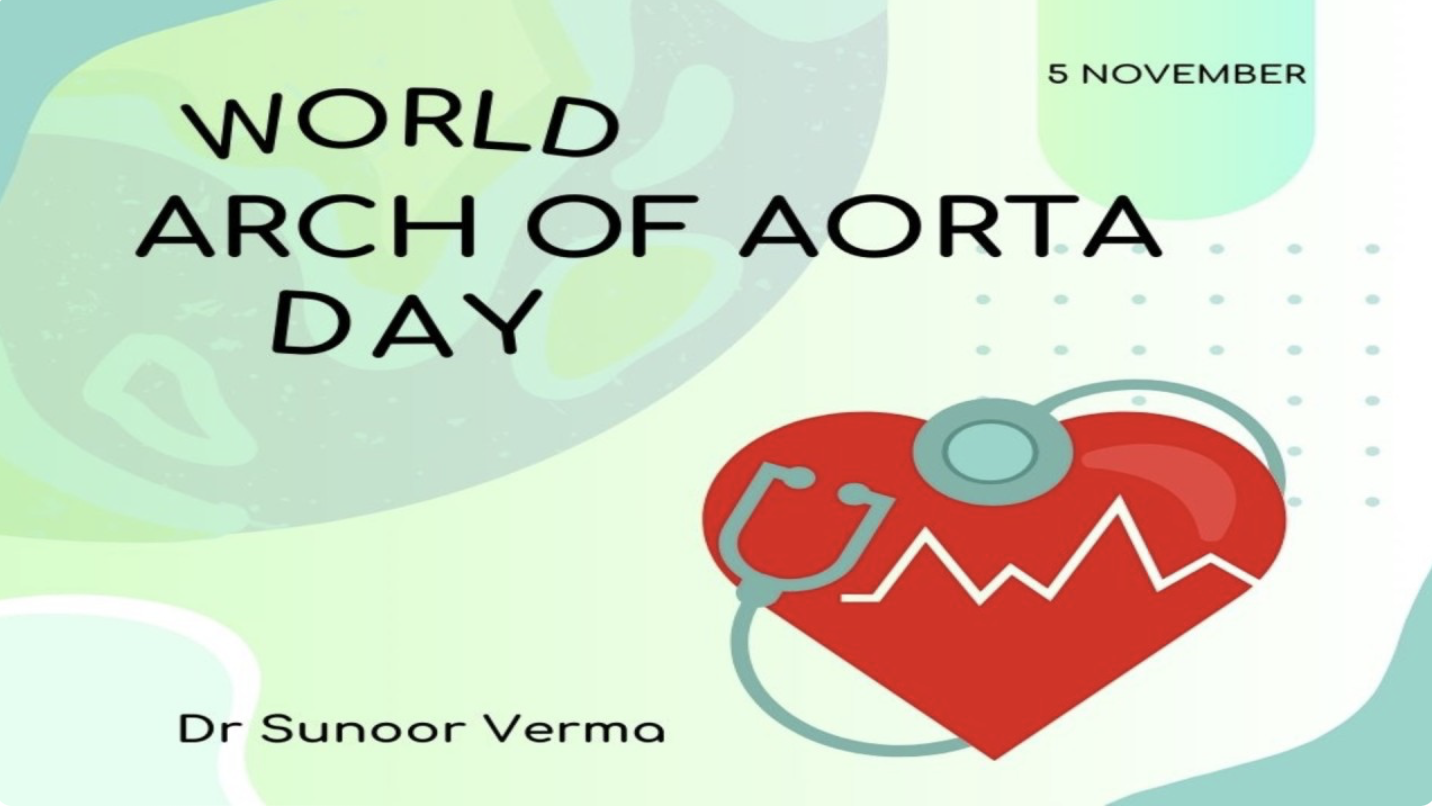Happy Arch of the Aorta Day!

In the wake of the COVID-19 pandemic, we witnessed an unprecedented surge in health communication efforts aimed at educating and mobilizing the public. While the importance of such #healthcommunication cannot be understated, there’s a growing concern of “health communication fatigue” as we risk overloading the public with information. In this article, I will explore the challenges of communication fatigue and offer strategies to ensure our messages effectively achieve public health objectives.
Much like the indiscriminate use of antibiotics can lead to unintended consequences, over-communicating health messages without a strategic approach can render our communication efforts ineffective. In the early days of the pandemic, organizations like WHO took centre stage in effectively communicating complex scientific knowledge. However, as we’ve continued to flood the public with information, we now risk a “HelDemic” of excessive health communication, both digitally and physically. The very “Infodemic” many health organizations aim to fight may be gaining from the indiscriminate health communication these organizations are indulging in.
Indeed, it’s time to address the ever-expanding plethora of health days. We’ve come a long way from marking general health awareness days, and it seems like we’re on the brink of celebrating the “World Day of the Right Kidney” or perhaps the “Day of the Arch of the Aorta.” While raising awareness about specific diseases, organs, and behaviours is crucial, we must strike a balance. The constant barrage of dedicated days can dilute the impact and lead to a sense of exhaustion among the public. We must prioritize key health issues, combining awareness with concrete actions. Let’s not forget that meaningful change in public health is more about sustainable, well-thought-out strategies than having a day for every tiny medical detail. After all, there’s only so much room on the calendar, and we should use it wisely to ensure our messages hit home effectively.
#BehaviouralScience offers compelling insights into #MessageFatigue resulting from overcommunication. The human brain is inherently wired to adapt and filter information to efficiently process an overload of stimuli. When individuals are consistently bombarded with health messages and information, their attention span wanes, and their receptivity to new messages diminishes. This concept is known as habituation, a fundamental principle in psychology. When people encounter the same information repeatedly without novelty or a clear call to action, they become desensitized, rendering subsequent messages less effective. Additionally, cognitive load theory highlights that excessive information can overwhelm the brain’s limited mental resources, decreasing message retention and comprehension. To combat #messagefatigue, it is essential to apply behavioural science principles, such as novelty, relevance, and clarity, in health communication strategies, ensuring that messages are frequent, engaging, resonant, and actionable.
The primary challenge is balancing the need for information dissemination and the risk of communication fatigue. To do this effectively, we must prioritize and strategically choose critical health days for communication. Rather than inundating the public with continuous events and messages, we should focus on a select few that have the most significant impact in the context of each country’s morbidity and mortality data.
Similarly, before choosing the health day to mark and encourage the population to take action, check if you have created the necessary infrastructure and trained the health staff. Only talking and having no facilities supporting action will reduce the audience’s trust in you as a communicator. Let’s take a page from the Singaporean playbook, a country celebrated for its strategic approach to health campaigns. Unlike the chaotic flurry of information that can overwhelm public health communication efforts, Singapore opts for a more measured strategy. They first build the necessary infrastructure, invest in training their healthcare staff, and only then launch well-thought-out health campaigns. This method ensures that the communication aligns with the country’s capabilities and resources. For instance, their successful ‘War on Diabetes’ campaign was launched after setting up a nationwide system for diabetes prevention, care, and treatment. It’s a testament to how governments can measure health communication, focusing on sustainable actions over flashy announcements.
For low-income countries heavily reliant on foreign aid, public officials may focus excessively on marking health days prioritized by donors. This diverts their attention from core responsibilities and risks undermining domestic ownership and sustainability. Striking the right balance is essential and requires local health leadership to have a spine and be incorruptible.
A shining example of this approach is the nation of #Rwanda, which, after experiencing a devastating genocide in 1994, has risen like a phoenix, demonstrating the power of local stewardship. The Rwandan government has taken control of its #DevelopmentAgenda and #HealthCommunication strategies, ensuring that international donors align with their priorities. As a result, they’ve seen remarkable improvements in healthcare access, education, and infrastructure, reducing child mortality and infectious diseases.
#StrategicHealthCommunication is critical, especially in low-income nations with limited resources. It involves profoundly understanding the local context, target audience, and the cultural factors affecting health behaviours. Effective strategies include audience analysis, evidence-based messaging, channel selection, deliberate message distribution, and rigorous monitoring and evaluation.
In a post-colonial world, #LeadershipCommunication plays a pivotal role in low-income countries, where building trust, mobilizing resources, influencing behaviour change, strengthening health systems, and managing crises are paramount. National health leaders must communicate effectively to instil trust, mobilize resources, drive behaviour change, and forge alliances to strengthen health systems. Above all, it requires national health leaders to be loyal to their mandate and not merely in the service of international donors.
For health leaders, national and international, talking selectively, concretely, and effectively may be better at preventing health message fatigue than generating endless noise using fluff and jargon to have their faces plastered over posts and posters.
As we move forward post-COVID-19, it’s crucial to recognize the potential pitfalls of health communication fatigue. Strategic health communication and effective leadership communication are essential to navigate this landscape successfully. By striking the right balance, prioritizing critical health days, and ensuring that public officials don’t lose sight of their core responsibilities, we can ensure that our public health messages effectively achieve our goals.